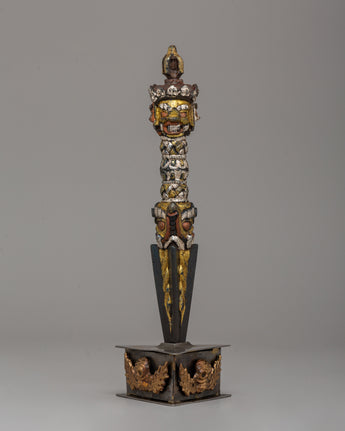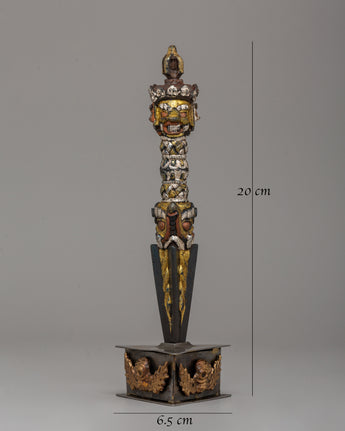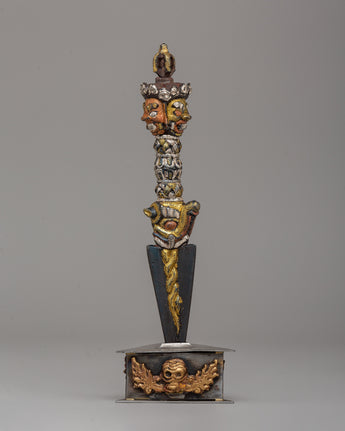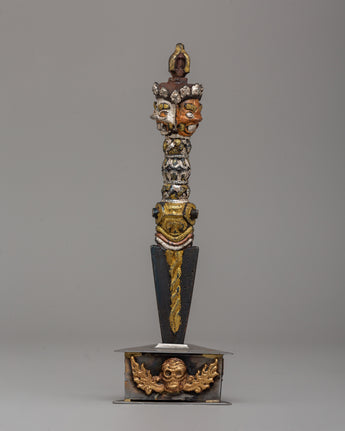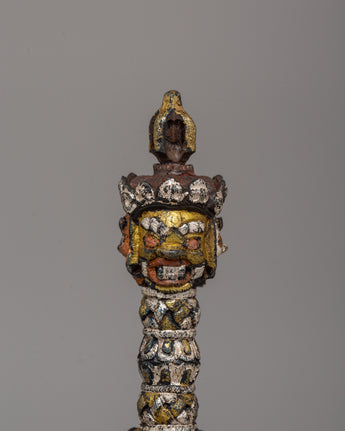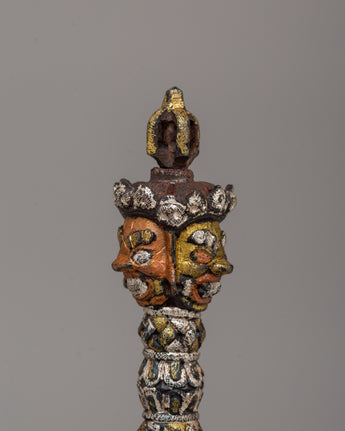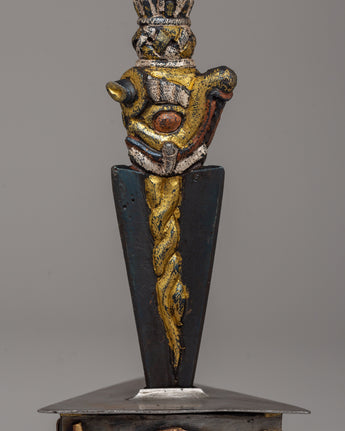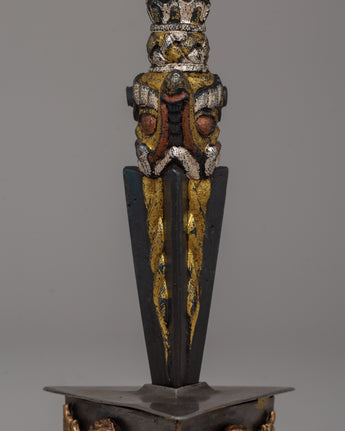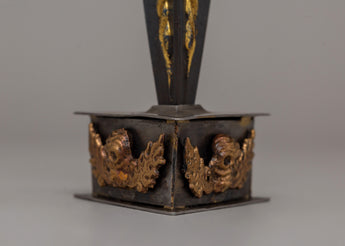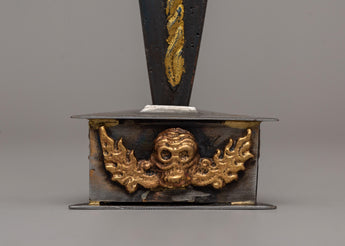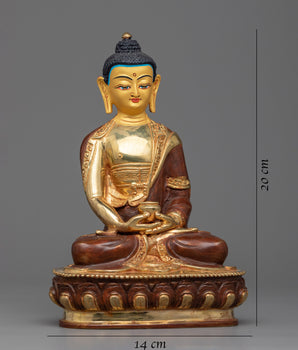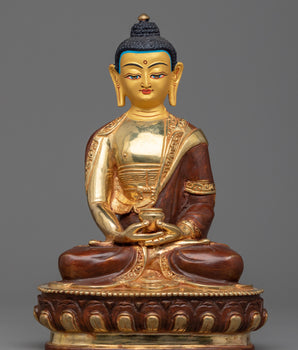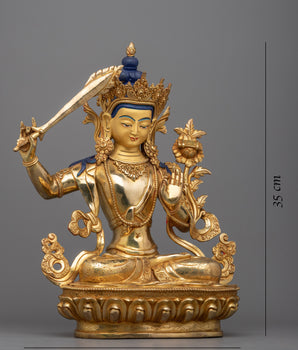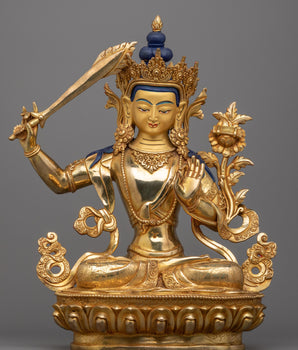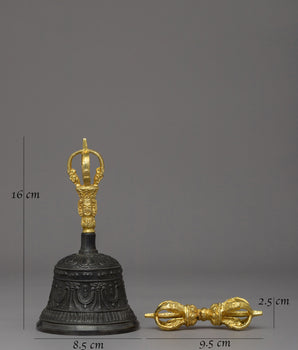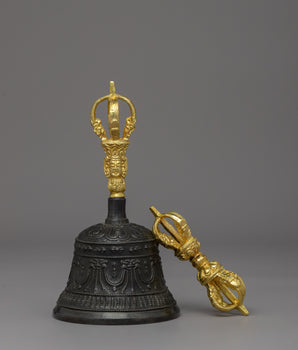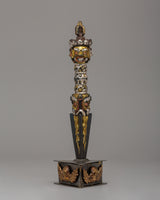
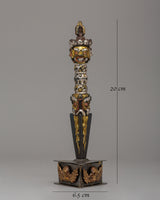
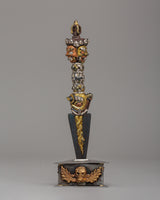
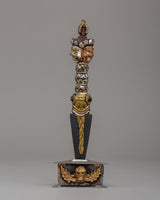
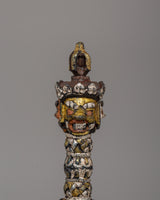
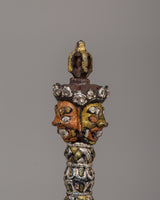
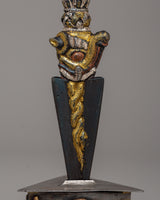
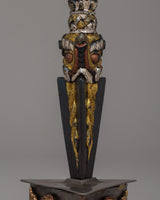
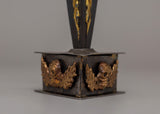
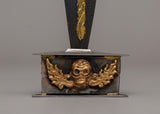
Ritual Dagger Phurba Tibetan Artwork | Energy Cleansing Craftsmanship

100% AUTHENTIC

HANDMADE

FREE SHIPPING
Phurba Tibetan Buddhism Artwork for Shrine
--------------------------------------------
Size: 20cm(Height) x 6.5cm(Width)
Weight: 0.35kg
Material: Iron, Copper, Silver Inlaid, Brass Inlaid
--------------------------------------------
About The Ritual Item :
This Phurba Tibetan Buddhism artwork is Carefully detailed and measures 20 cm tall by 6.5 cm wide. It has iron, copper, silver, and brass inlays, reflecting its importance as a ritual tool in Tibetan Buddhism. Silver and brass inlays add a unique touch to the design, as these metals frequently represent purity, spiritual energy, and transformation. Combining these elements strengthens Phurba's sacred role in spiritual practices, where it is used to break attachments and overcome obstacles.
The central figure at the top of the Phurba represents a deity with three faces, each with a powerful expression. The three eyes represent the ability to see beyond ordinary perception, a critical component of spiritual awakening. The detailed headdress on the central figure represents divine wisdom and protection, essential for the Phurba's role during rituals. The dagger's shaft is embellished with intricate designs that evoke strength and the ability to overcome worldly distractions.
The Phurba sits on an elaborate pedestal adorned with patterns representing harmony and the interconnectedness of all things. These decorative elements represent balance and the ability to create order out of chaos. The fine inlays and overall structure elevate this Phurba from a spiritual tool to a one-of-a-kind piece of Tibetan art that combines craftsmanship, cultural significance, and purpose.
Introduction To The Phurba :
The ceremonial dagger (Sanskrit: Kila; Tibetan: phurba) is essential for the expelling of evil and is thought to be especially effective in neutralizing the forces that obstruct Tantric Buddhist practice. It has ancient origins, first appearing in the Indian Rg Veda as the core blade of the vajra used by Indra to destroy the primordial cosmic snake Vritra. Kila, a peg or stake in Sanskrit, was most likely associated with Vedic sacrifices. Meditation on the Vajrakila Tantra, an early Indian scripture first promoted in Tibet in the eighth century by Padmasambhava, one of the founding teachers of Tibetan Buddhism, is used to invoke the three-headed Vajrakila Buddha.
How to set up your own Buddhist Shrine?
Find a clean, quiet, and uncluttered spot
Set up an altar table, and cover it with an altar cloth that calls to you
Place your sacred item (statue, thangka, or a picture of Buddha) at the center


